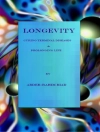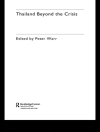In the winter of 1811-12, a series of large earthquakes in the New Madrid seismic zone-often incorrectly described as the biggest ever to hit the United States-shook the Midwest. Today the federal government ranks the hazard in the Midwest as high as California’s and is pressuring communities to undertake expensive preparations for disaster.
Coinciding with the two-hundredth anniversary of the New Madrid earthquakes, Disaster Deferred revisits these earthquakes, the legends that have grown around them, and the predictions of doom that have followed in their wake. Seth Stein clearly explains the techniques seismologists use to study Midwestern quakes and estimate their danger. Detailing how limited scientific knowledge, bureaucratic instincts, and the media’s love of a good story have exaggerated these hazards, Stein calmly debunks the hype surrounding such predictions and encourages the formulation of more sensible, less costly policy. Powered by insider knowledge and an engaging style, Disaster Deferred shows how new geological ideas and data, including those from the Global Positioning System, are painting a very different-and much less frightening-picture of the future.
Tabella dei contenuti
1. Threshold
2. The Day the Earth Stood Still
3. Think or Panic?
4. The Perfect Mess
5. Earthquake!
6. Breakthrough
7. How the Ground Shakes
8. How Earthquakes Work
9. Plate Tectonics Explains (Most) Earthquakes
10. Earthquakes That Shouldn’t Happen
11. What’s Going on Down There?
12. Guidance from Heaven
13. Faults Turning On and Off
14. More Dangerous than California?
15. Chemotherapy for a Cold
16. What to Do?
Further Reading and Sources
References
Acknowledgments
Index
Circa l’autore
Seth Stein is the William Deering Professor of Geological Science in the Department of Earth and Planetary Sciences at Northwestern University. He is the author of Disaster Deferred (CUP 2010) among several other titles and over 100 articles.












